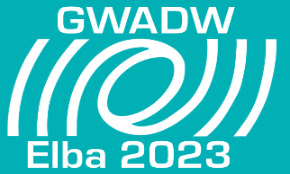Speaker
Description
Currently, the sensitivity of the second generation Gravitational-Wave (GW) detectors is limited in the low and mid frequency range by Thermal Noise (TN) and Seismic Noise (SN).
Major improvements in GW instrumentation science are expected from the Thermal Noise (TN) reduction in the mid-frequency range of the detectors, achievable also by cooling down the mirrors to $10$ K.
In order to select the coating material that are intended to be used in the 3-rd generation of detectors, the TN of new coatings should be directly measured using an interferometric method in a cryogenic environment.
A setup enabling this kind of characterization is under development.
In this poster, an overview of the experiment is shown focusing on the isolation system I am developing in order to reduce the ground vibration that can affect the measurement.
By design, a double-stage attenuator consisting of an inverted pendulum pre-isolator and a pendulum stage are expected to provide nearly four orders of magnitude noise reduction at $30$ Hz, corresponding to a residual displacement around $10^{-13}$ m/√Hz for the optical setup. These figures also take into account the effect of the heat conduction link between the suspended optical table and the cold finger of the cryocooler.

